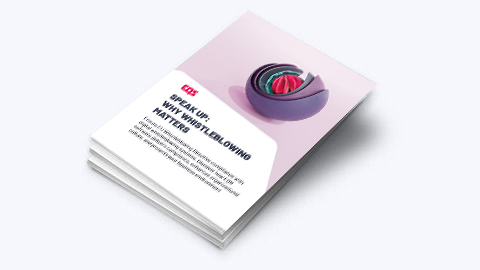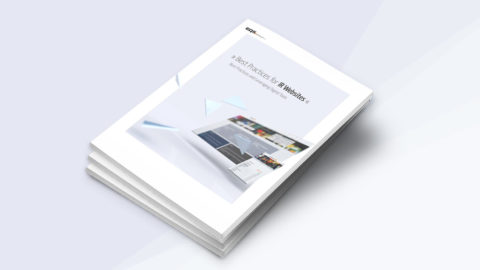Stop chasing compliance awareness (and how smart teams get through to employees)
Struggling to engage employees with compliance training and communication? Discover practical strategies to improve compliance awareness, reduce risk, and make your message stick.

You send out another compliance newsletter. Another mandatory training. Another well-meaning poster in the breakroom. And still – people click through, tune out, and carry on. If you’re in a compliance role, this likely sounds familiar. You’re trying to protect the company, but instead you’re stuck chasing awareness that never sticks.
You’re not alone. And more importantly, you’re not doing it wrong. The system is.
Compliance is not the center of their world (and that’s okay)
The goal of compliance isn’t for employees to care about policies 24/7. The goal is to reduce risk. That means making sure they know what to do when it matters.
Other departments focus on their core goals – sales, marketing, product development. Expecting them to treat compliance with the same urgency just isn’t realistic. And that’s not a failure. It’s a design flaw in how we approach awareness.
The fix? Shift your mindset. Stop measuring success by how many people opened your email. Instead, ask: do they know what to do in a high-risk moment?
Make it easy for employees to access guidance in real time. Embed reminders into workflows. Offer quick references, not just full trainings. Think ‘just-in-time’ support over ‘just-in-case’ content.
Why fragmented data leaves you flying blind
You’re planning out campaigns, rolling out trainings, trying to track effectiveness – but your data lives in five different places. Sound familiar, right? Without a clear picture of who needs what, and what’s working, you’re operating in the dark.
Smart prioritization starts with visibility. Not more tools, but better integrated ones. A connected system lets you see trends, spot risks, and focus efforts where they matter most. Imagine being able to answer:
- Who’s ignoring your messages?
- Which teams need a different approach?
- Where are risks quietly building?
You can’t fix what you can’t see. Step one is cleaning up the view.
Generic doesn’t work. Personal does.
“All-staff” emails and one-size-fits-all trainings often land flat. People are busy. Their inboxes are full. Their time is limited. And if your messages feel generic, they’ll tune out.
Make compliance feel relevant. A message to engineers should look different from a message to sales. Use plain language. Get to the point. Make it visual. And, whenever possible, embed communication into existing channels: team chats, dashboards, quick videos.
Better yet, enlist compliance ambassadors. These are people within departments who act as go-to contacts for questions or reminders. Peer-to-peer support often lands better than corporate broadcasts.
Meet employees where they are, with content that respects their time.
Standardized communications may meet regulatory requirements, but they rarely inspire employees to change behavior. When people feel that the content doesn’t apply to them, they disengage. Some skip it altogether; others go through the motions without absorbing the message.
Format and frequency play a big role in how messages are received. Long emails and static PDFs are easy to overlook. A more effective approach is to present key information upfront, with short, focused messages. Use a tiered structure: start with the essentials, then link to more detailed content for those who want or need it.
The bottom line: Make compliance work for them
If your compliance efforts feel like shouting into a void, it’s not a lack of effort – it’s a signal that the old playbook isn’t cutting it.
Start with this mindset shift: You’re not chasing awareness. You’re building smart responsive systems that help employees do the right thing at the right time.
Less noise. More impact.
Want to see what smarter compliance communication looks like in action? Let’s talk.

When your team understands compliance, everyone wins




